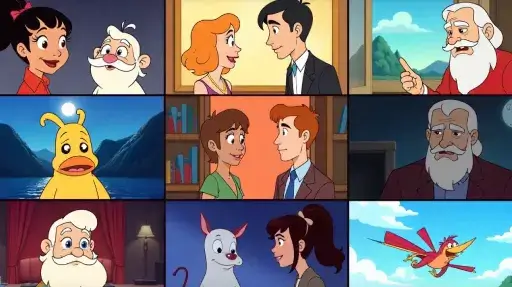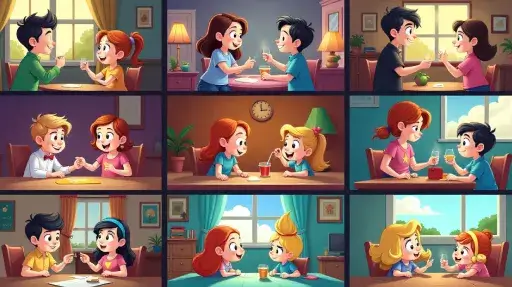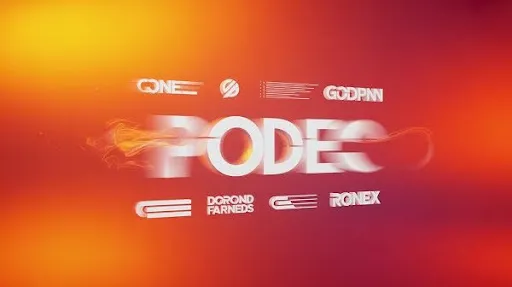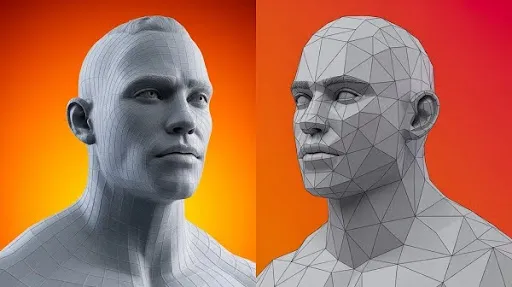Animation has transformed the way stories are told, bringing imagination and creativity to life in ways no other medium can. From magical worlds to lifelike characters, animated films have the power to inspire, entertain, and spark wonder across all ages. If you’re a storyteller—or aspire to be—animation is one of the most exciting fields to explore. But what exactly is animation? And what types of animation do artists and studios like Prolific Studio use to bring stories to life? Let’s dive in.
What is the Definition of Animation?
At its core, animation is the process of creating the illusion of movement through a sequence of images. While this may sound simple, the technique behind it is a fascinating blend of art, science, and technology. Before we get into the different styles of animation, let’s clarify what animation truly means.
What is Animation?
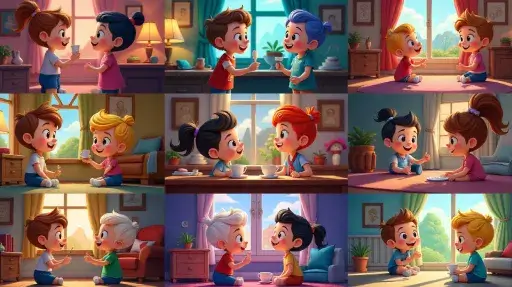
Animation is a technique in which drawings, models, or digital designs are photographed or rendered in succession to create motion. This works because the human eye can only retain an image for a fraction of a second. When images appear rapidly—one after another—the brain stitches them together into a single continuous motion.
In the early days, traditional animation involved drawing or painting frames on transparent celluloid sheets, which were then photographed in sequence. Classic cartoons are great examples of this method. Today, however, most animations are created with advanced digital tools, including computer-generated imagery (CGI), allowing for more detail, depth, and realism than ever before.
To achieve smooth movement, frame rate plays a crucial role. Frame rate refers to the number of images shown per second. For example, characters animated “on twos” use 12 drawings per second, which gives motion but can appear slightly choppy. By contrast, films often run at 24 frames per second, delivering fluid and natural movement that feels more realistic to viewers.
Different Types of Animation
Traditional Animation
Traditional animation, also known as cel animation, is one of the oldest and most iconic forms of animation in film history. In this method, every single frame is drawn by hand to create the illusion of movement. It works much like a flipbook but on a much larger and more detailed scale.
Most traditional animation is 2D, and some of the most famous examples include Disney classics like Aladdin and The Lion King. In the early days, animators used transparent celluloid sheets and worked on light tables to trace and refine their drawings. This process allowed them to see the previous frame and ensure smooth transitions between movements.
While traditional animation is less common in modern productions, the art form has evolved with digital tools. Today, artists often use tablets instead of paper, and hand coloring has largely been replaced by digital coloring methods—a shift that began with Disney’s The Little Mermaid in 1989.
Renowned animators like Aaron Blaise still keep the art alive, creating breathtaking hand-drawn films and teaching the next generation of artists. At Prolific Studio, we celebrate and adapt these timeless techniques, blending the charm of traditional animation with modern technology to craft unique visual experiences.
Anime
Anime is often considered a branch of traditional animation, but the term specifically refers to animation created in Japan. Take Akira, for example—one of the most iconic and influential anime films ever made.
Over the years, Japan has become a global powerhouse in animation, with anime shaping popular culture across the world. One of the unique qualities of anime is the way it’s often animated “on 3s,” meaning a new drawing appears every three frames. In contrast, most U.S. animation is done “on 2s,” or every two frames.
This technique allows Japanese animators to add more intricate details to each frame since they’re producing fewer drawings. It also gives anime its signature style of movement. Of course, there are exceptions—some U.S. animations use 3s, while some anime productions use 2s or even 1s for smoother motion.
If you’d like a deeper dive into anime’s artistry and influence, Prolific Studio recommends exploring classics like Akira to truly appreciate the craft.
2D (Vector) Animation
2D animation can take many forms. Traditional 2D is what we see in early Disney classics like Pinocchio or Beauty and the Beast. But modern technology introduced another form called vector-based animation, which is still 2D but not traditional.
So, what makes vector-based different? Unlike pixel-based images (like JPGs or GIFs), vectors are built with mathematical pathways—defined by points, lines, and shapes—that can be scaled infinitely without losing quality. This means a character or object can be resized or reshaped smoothly, making animation much more flexible.
Vector-based animation is particularly powerful because it allows animators to re-use character models and assets instead of redrawing them for every scene. Animators can move these vector shapes around and create motion with ease. This approach is not only efficient but also perfect for artists who may not be strong at freehand drawing—because the software handles a lot of the refinement.
At Prolific Studio, vector-based animation is a go-to technique for creating sleek, scalable, and engaging 2D animations that bring stories to life.
3D Animation
Today, 3D—also known as computer animation—has become one of the most popular forms of animation. However, just because computers are involved doesn’t mean the process is simple. The computer is only a tool; creating 3D animation still requires a long, detailed, and highly creative effort.
In 3D animated films, animators use specialized software to move a character’s body parts frame by frame. They carefully position the character in each digital frame, and the computer calculates the movement between those frames. Animators then fine-tune every curve, gesture, and motion to make the character feel lifelike and believable. From Pixar’s groundbreaking Toy Story in 1995 to Pixar’s Coco, 3D animation has become a dominant force in the film industry.
What sets 3D apart from 2D or other traditional animation methods is its full visibility. In 2D animation, if a character turns sideways, the animator only needs to draw the side profile. In contrast, 3D requires the entire character to remain fully visible from all angles, adding another layer of complexity to the process. While technology provides incredible tools, it also demands more precision and planning.
Whether working in 2D or 3D, animators and filmmakers at Prolific Studio rely heavily on storyboards to plan out every frame. Unlike live-action movies, animation doesn’t allow shortcuts with camera tricks. Storyboards act as the foundation, guiding the visual storytelling and ensuring the final animation flows seamlessly.
Motion Graphics
Motion graphics are digital visuals designed to create the illusion of movement, most often used in advertisements, film title sequences, and marketing campaigns. Their primary goal is to communicate a clear message to the audience in an engaging way. Often paired with sound effects or music, motion graphics bring ideas to life and are widely used in multimedia projects.
Unlike traditional character animation, motion graphics focus heavily on text, shapes, and branding elements, making them a powerful tool for businesses. At Prolific Studio, motion graphics are crafted with creativity and precision to help brands stand out. From modern typography animations to sleek visual transitions, today’s top motion graphic trends continue to shape how companies connect with their audiences.
Stop Motion
Stop motion is a unique animation technique that brings still objects to life through frame-by-frame adjustments. Instead of relying on drawings or computer graphics, physical objects such as clay figures, puppets, or everyday items are moved in small increments and captured one frame at a time. When played in sequence, these frames create the illusion of motion.
Although the process can be time-consuming, stop motion offers a handcrafted and timeless charm that digital animation often cannot replicate. Famous films like Wallace and Gromit, Chicken Run, and The Nightmare Before Christmas highlight the magic of this technique. While it may be one of the oldest forms of animation, stop motion remains a celebrated art form that continues to inspire creators.
At Prolific Studio, we recognize the enduring appeal of stop motion and how it can give brands and stories a distinctive, authentic touch.
Cutout Animation
Cutout animation is one of the oldest and most fascinating forms of animation. This style works like 2D stop motion, where animators move paper or digital cutout shapes frame by frame to create the illusion of movement.
Because it is more affordable and slightly easier to produce compared to other animation techniques, cutout animation has long been popular in independent creative spaces. A classic example of this style can be seen in the quirky and humorous animations used in Monty Python.
The roots of this technique trace back to 1832, when Joseph Plateau invented the Phénakisticope—the first widely recognized device that brought moving images to life. This invention worked on the principle of “persistence of vision,” where the brain blends multiple static images into one seamless motion.
At Prolific Studio, we celebrate the rich history of cutout animation while also reimagining it with modern tools and creativity, giving brands and storytellers a unique way to bring their ideas to life.
History of Animation
While it’s difficult to pinpoint exactly when and where the first animation was created, storytelling through visuals has captivated audiences for centuries. Let’s take a journey through the fascinating history of animation.
From shadow puppetry around 200 A.D. to the magic lantern in the 1650s — the first real image projector — storytelling through motion has been a timeless art form.
A major breakthrough came in 1832 with the invention of the Phénakisticope by Joseph Plateau. This device, based on the principle of persistence of vision, created the illusion of smooth motion. Persistence of vision occurs when multiple images blend in the brain to appear as a single moving picture, forming the foundation of modern animation.
In 1834, William George Horner developed a similar motion picture device. He placed sequential drawings inside a rotating drum, creating one of the earliest systems for projecting moving images. Horner called it the Daedatelum, or “wheel of the devil,” but French inventor Pierre Desvignes later renamed his version the Zoetrope, derived from the Greek term meaning “wheel of life.”
These pioneering achievements in animation laid the foundation for the art form we enjoy today. But if we’re pinpointing who truly played the biggest role in its creation, it’s worth exploring the story of the “Father of Animation”—or perhaps, the fathers?
The Father(s) of Animation
The story of animation is rich and diverse, with many pioneers contributing to its development. Interestingly, there are even multiple claims for the title of “first animation ever.”
The Father of American animation is James Stuart Blackton. Although originally from Britain, Blackton became a key figure in American cinema by creating the country’s first animation. He was also among the earliest filmmakers to experiment with the stop-motion technique.
In 1900, Blackton is credited with producing the first-ever animated film, The Enchanted Drawing, marking a significant milestone in the history of animation.
In 1906, he produced a groundbreaking silent film titled Humorous Phases of Funny Faces, in which he brought blackboard drawings to life by filming them at 20 frames per second.
However, if you were to ask the world who is hailed as the “Father of Animation,” one name consistently rises to the top. French cartoonist Émile Cohl is credited with creating the very first fully animated film. In 1908, his groundbreaking work Fantasmagorie made its debut in Paris.
In 1914, Earl Hurd pioneered cel animation, laying the foundation for traditional animation. This innovation would go on to transform the animation industry throughout much of the 20th century.
That same year, long before Mickey Mouse appeared, cartoonist Winsor McCay created the first animated short featuring a recognizable character. His dancing dinosaur, “Gertie the Dinosaur,” captivated audiences and brought animation to life in a new way.
Disney
No animated character has achieved the legendary status of Mickey Mouse. The first Mickey cartoon, “Plane Crazy,” was technically a short film, but it was never officially released. The character’s breakthrough came with “Steamboat Willie” in 1928, marking Disney’s first cartoon with synchronized sound.
In 1937, Snow White and the Seven Dwarfs became the first full-length feature entirely hand-drawn. Its stunning artistry and commercial success not only cemented Disney’s reputation but also established a strong foundation for traditional animation across the entire industry.
From the classic 2D and traditional hand-drawn animated films to today’s cutting-edge CGI, storytellers have built incredible worlds to bring their stories to life.
From the iconic stop-motion skeleton battle scene in Jason and the Argonauts (1963)
to the charming claymation in Wallace and Gromit: The Curse of the Were-Rabbit.
And all the way to the breathtaking computer animation in nearly every recent Disney-Pixar release.
Animation has remained one of the most cherished film formats across generations, and it’s always thrilling to imagine what new techniques and innovations may emerge next.
Related Article:

